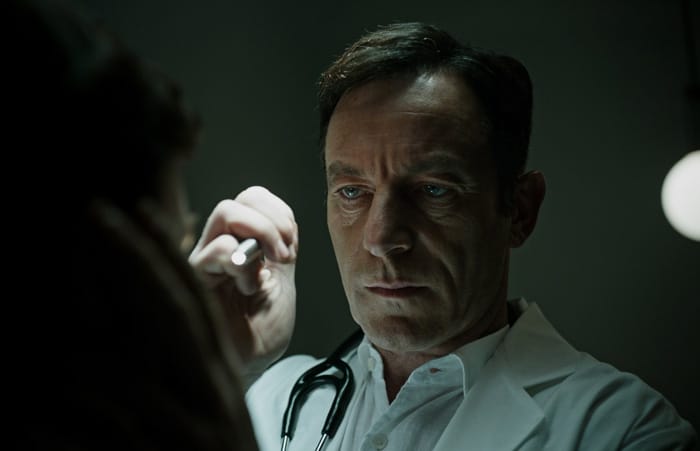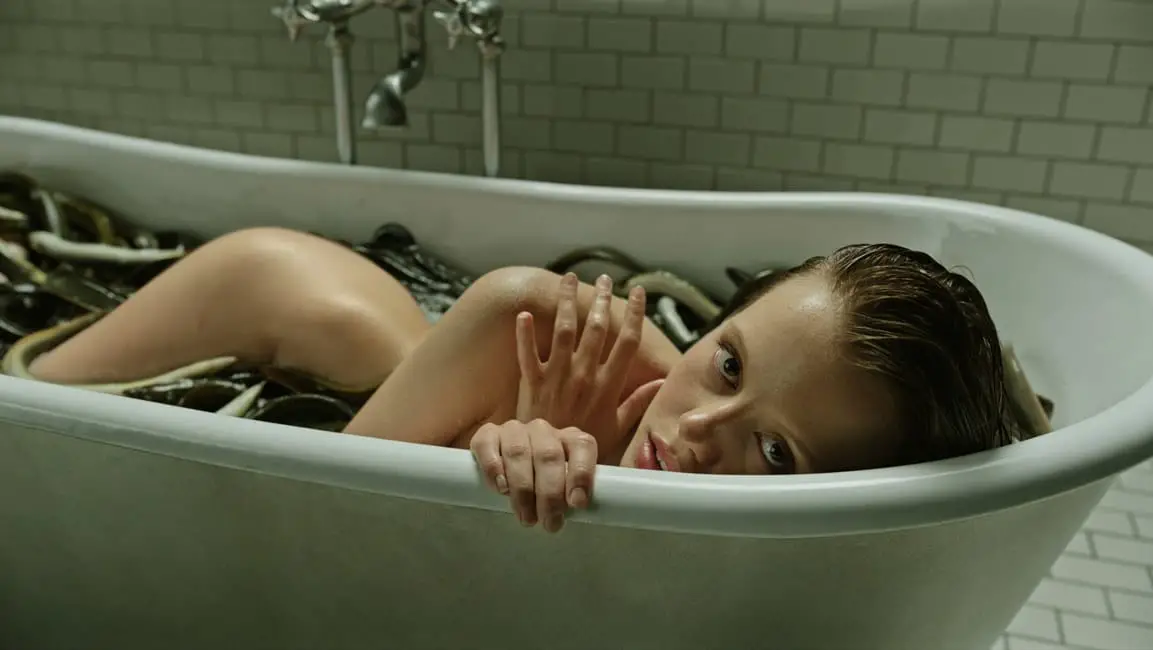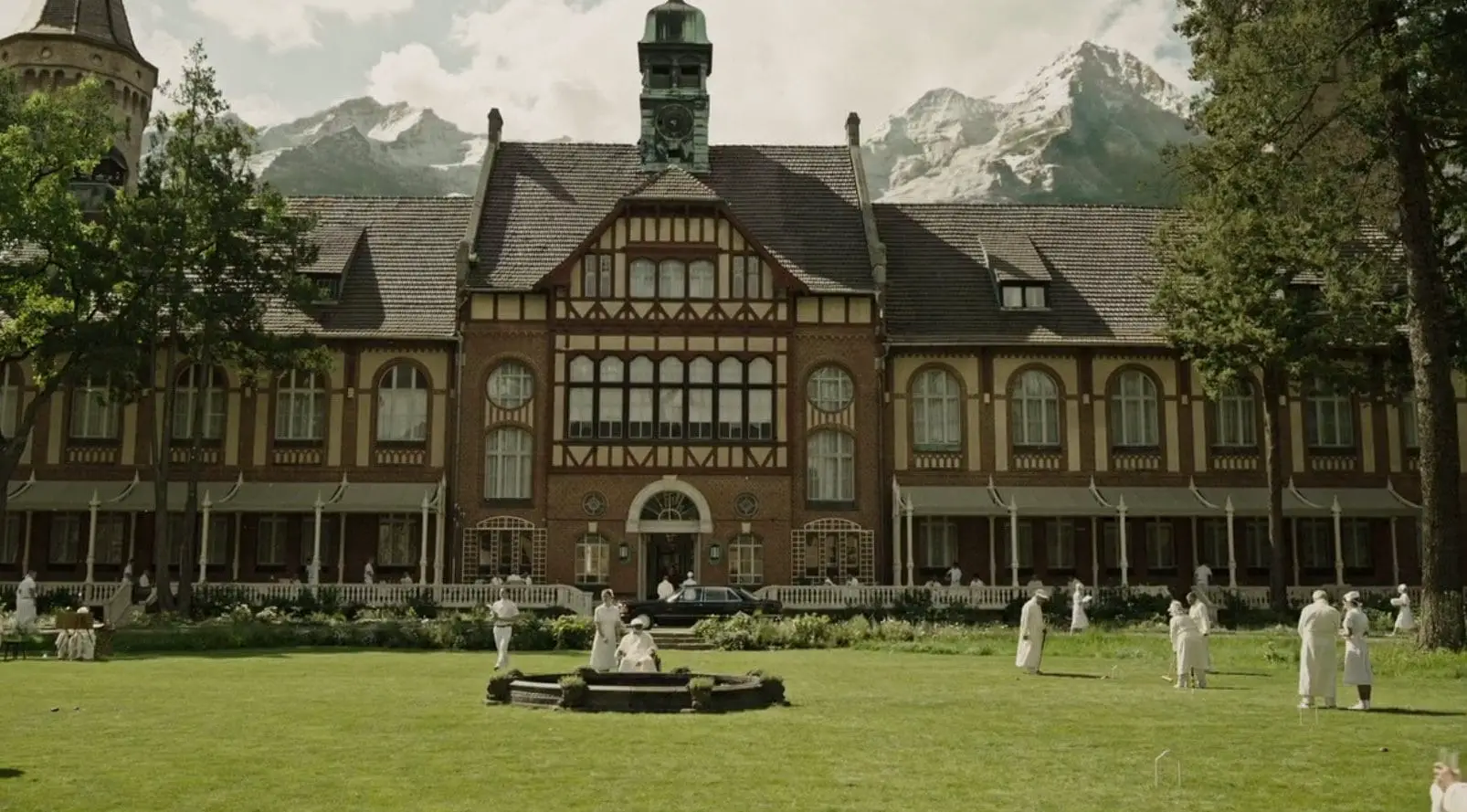A Cure For Wellness: Workaholism & Conspiracy Theory. The Meaning Of The Film A Cure For Wellness, The Essence Of The Ending, The Explanation Of The Plot, Why The Hero Smiled.
Country: USA, Germany
Genre: fantasy, thriller, drama, detective
Year of production: 2017
Directed by: Gore Verbinski
Actors: Dane DeHaan, Jason Isaacs, Mia Goth
The meaning of the film “A Cure for Wellness” is to denounce the consumer society: the movie tells about the senselessness of striving for material wealth.
What is the movie about
The plot of A Cure for Wellness begins with Lockhart, a young and ambitious employee of a large New York firm, sent in search of a boss on a Swiss resort.
By the way, the boss, disappointed by the “rotten capitalist society”, did not plan to return to New York, which he informed his colleagues about. But Lockhart didn’t know that.
 Dane DeHaan as the main character Lockhart. Frame from the film.
Dane DeHaan as the main character Lockhart. Frame from the film.
As a result, he ended up in a gloomy “Gothic” castle, where “rich Pinocchio” live, who came to be treated for depression caused by the eternal race for big money. No matter how hard Lockhart tries, he fails to find the boss. Instead, he himself becomes a patient of the resort, which more and more reminds him of a terrible hospital. And the further Lockhart remains there, the faster the line between the fantasies of the damaged mind and reality is blurred.
Gore Verbinski made an interesting mystical movie, somewhat similar to Shutter Island (only the lazy did not talk about the similarity of the main actor with DiCaprio). In places it scares, and in places it makes you think about the deep meaning. All analysis of the picture speaks of its metaphor, which is confirmed by the philosophical reasoning of the characters.
Plot transcript
According to all reviews, the idea of the film is that the consumer society is gradually taking a person’s life.
The protagonist of the film Lockhart is a workaholic. He literally burns at work. Once his father, an employee of a large corporation, unable to withstand the insane rhythm of life, committed suicide by throwing himself from a bridge. At some point, the young man also begins to see himself standing on the edge of the bridge. This indicates his emotional burnout. He does not have enough time to take care of his sick mother. So he puts her in a nursing home.
There, an elderly woman, doing occupational therapy, paints beautiful ballerinas – the decoration of music boxes. Ballerinas in the film symbolize freedom and the flight of the soul. After his mother’s death, Lockhart takes one of the ballerinas for himself as a reminder of her.
Time trouble constantly accompanies his life: even on the train, he cannot rest in peace.
The head of the corporation in which Lockhart works, at one moment realized that he lives on petty petty-bourgeois interests. He realized that the main thing in this life is to maintain common sense. That’s what he said in a letter to the board of directors.
With a literal reproduction of the events of the film A Cure for Wellness, you can find out that the mad baron (he is also the head physician and director of the medical institution), under the guise of wellness procedures, launches parasitic fish into the body of patients, which gradually exhaust and kill a person.
 Jason Isaacs as Chief Physician Volmer. Frame from the film.
Jason Isaacs as Chief Physician Volmer. Frame from the film.
From the bodies of the victims, the crazy “doctor” receives a unique drug that can preserve youth. This moment completely mirrors the situation that has developed in modern society: according to conspiracy theory, only a handful of people are endowed with power and benefits, and, accordingly, with great influence. This handful use other people to achieve their goals.
The meaning of the picture is that people are voluntarily involved in this process. People are offered significant benefits: to stay healthy and young as long as possible. In modern society, the cult of the body, the cult of youth and beauty is constantly being imposed on us (despite the new fashion trend, body-positive, this still remains unchanged), and many are ready for senseless sacrifices for the sake of improving it. The powerful of this world are trying to find means to prolong life, but, be that as it may, you have to pay for everything.
Without noticing it, a person becomes a cog in the mechanism of a giant consumption machine. At the same time, he experiences alienation, which Karl Marx spoke about: a person seems to be sacrificing himself to a consumer society. Forced labor becomes a means to satisfy the needs for more and more benefits. In the process of labor, a person does not belong to himself, and, accordingly, does not experience any pleasure from his activity.
The title of the film (“A Cure for Wellness”) contains its hidden meaning – it is an oxymoron that very accurately conveys the main idea.
What Volmer wanted
Volmer is not just a doctor, he is a baron, and it is he who owns the castle. Several centuries ago, he had a romantic relationship with a sick sister whom he tried to treat.
He has a laboratory in which he studies eels that live in underground waters. This “magic water” is highly toxic. But for eels, it extended the life of up to three hundred years.
Volmer tried to transfer the discovered effect to humans: he placed live eels in the throat and stomach of living people. The resulting concentrate was drunk only by himself, his assistant Hannah, and a couple of other people. Thus, Volmer’s entire experiment was aimed at achieving his own perverted goal.
 The role of Hannah was played by Mia Goth. Frame from the film.
The role of Hannah was played by Mia Goth. Frame from the film.
By killing people, Vollmer inspires that they are getting much better. In the film, the patients are depicted as reality-denying zombies. Here you can draw a parallel with modern media and advertising, which lull the vigilance of a person, presenting information with a share of propaganda – in a distorted form.
What do acne mean
In the film, the baron injects parasitic eels into the patient’s body, which, according to him, live for 300 years. Real eels live up to 20 years at best.
Capitalist society is just over 300 years old. It, like a parasite, draws vital energy from many generations of people in order to maintain its existence. The droplets that fill the vessel of longevity are the lives of individuals.
Eels are chosen as a symbol of this society not by chance. They are cold (cold-blooded) and slippery (quirky). Eels resemble snakes, which in many cultures symbolize temptation and evil. These creatures are contrasted with the image of a dead goldfish that we see in the corporate office. It symbolizes ruined hope and unfulfilled desires.
Eels live in water, an image that also has a special meaning in the film. The characters in the movie A Cure for Wellness ingest water in large quantities. With this, the creators wanted to show how deeply the parasitic society has penetrated into the very essence of man: water should purify, but here it infects.
The meaning of the ending
At the end there are some important points. When a girl “grows up”, she is surrounded by eels. This is a kind of reference to initiation, an image of growing up and the influence of society on the intimate part of a girl’s life. This refers to the gradual corruption by a person of his own pure, childish consciousness.
The film has two endings (and two explanations): relatively real and fantastic.
The meaning of the first ending of the film A Cure for Wellness is that the hero eventually dies, and everything else is an alternative scenario.
According to the second option, the main character gets out of the labyrinth-sanatorium and unexpectedly meets with the bosses from his corporation. That is, the meaning of the ending lies in the fact that Lockhart was able to get out of the corporation, which, in fact, works only for itself, without caring at all about employees who, like zombies from a sanatorium, are chasing money, giving life, dreams and health in return.
At the end of the film, we observe the scene of the sanatorium being set on fire. People look at the fire, go out into the yard, but they have nowhere to go. So they just watch what is happening.
In the end, the protagonist must make a choice: stay and build a career, or find freedom and start living.
 Frame from the film.
Frame from the film.
At the end of the film, we see Lockhart’s face. His smile at the end is more of a smirk. The explanation is this: the boss, in search of which he went, at the very beginning said how important it is to maintain common sense and be able to cleanse oneself of the values philistinism and thoughtless burning of life.
Lockhart, sort of, realized that he had made the right choice, leaving not by car, but by bicycle, and with a girlfriend, and not with a work colleague. But will he be able to maintain his sanity, having managed to destroy the vicious system? His smirk suggests that this is impossible.
However, maybe Lockhart was insane from the beginning, and everything that happened to him was just a paranoid fantasy? However, for a symbolic reading of the film, this is unimportant.







